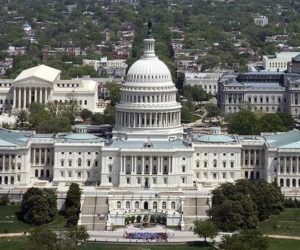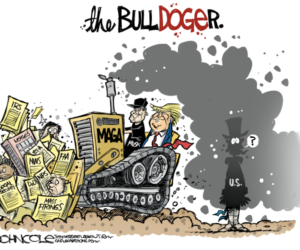
To put the size of this contract in perspective, from 2001-2008, total U.S. arms sales were $155 billion (2008 dollars); this contract exceeds annual sales every year from 2001-2008. Sales this year are estimated at $38 billion but could reach $50 billion next year, according to Reuters. Sales to Afghanistan have totaled about $20 billion for 2009 – 2011.
Although this is a very big deal on many levels, I’m simply focusing on dollars.
The package includes 84 F-15s at a cost of $30 billion and helicopter sales totaling about $30 billion that include spare parts, training simulators, long-term logistics support, and some munitions.
The Saudis would buy about 72 UH-60 Black Hawk helicopters and as many as 60 AH-64D Longbow Apaches, the official said. The Longbow is the Army’s premier antitank helicopter, capable of firing laser-guided or all-weather missiles. The Longbows are in addition to 12 that Congress in 2008 cleared Boeing to sell to the Saudis.
You’ll be forgiven if you haven’t heard about it in all of the “Ground Zero Mosque” hysteria. That’s because this story — one of real substance not created-for-the-base rhetoric — has barely been covered by the domestic press. Ditto the blogosphere.
Apparently both the left and the right are perfectly content with our contributing to the world’s growing state of military readiness: from 2001-2002 to 2007-2008, global arms sales increased about 50 percent (constant 2008 dollars). This, after a continued decline in arms sales was reported in 1996.
As Foreign Policy In Focus noted in 1996, one of the problems with U.S arms sales is this:
Many weapons are sold to the world’s trouble spots, thus helping to fan the flames of war instead of promoting stability. The United Nations Development Program noted in its 1994 Human Development Report that over 40% of the sales of major conventional weapons during the past decade went to such trouble spots.
But perhaps President Eisenhower said it best in 1953:
Every gun that is made, every warship launched, every rocket fired signifies, in the final sense, is a theft from those who hunger and are not fed, those who are cold and are not clothed. The world in arms is not spending money alone. It is spending the sweat of its laborers, the genius of its scientists, the hopes of its children… This is not a way of life at all, in any true sense. Under the cloud of threatening war, it is humanity hanging from a cross of iron.
This president prefers rhetoric about controlling black market access to nuclear weapons to actually doing something to limit convention weapons, the core of modern warfar.
The Wall Street Journal reminds us that change in the White House isn’t always a change in policy:
Negotiated largely in secret because of the sensitivities in the region, the [Saudi] sale is part of a strategy spearheaded by the George W. Bush administration and expanded by President Barack Obama to beef up the militaries of Arab allies as a counterweight to Iran. Saudi Arabia, home to the birthplace of Islam, claims leadership of the Sunni world, making it a rival of Iran, which is predominantly Shia.
Ah, so we’re expanding our involvement in Islamic intra-religious skirmishes? Lovely.
In additional to Saudi Arabia, the Obama administration has moved aggressively to sell sophisticated arms to the United Arab Emirates and other Gulf states, as well as to provide support on a much smaller scale to the Lebanese Army.
Gotta hold up that position as number one arms dealer.
From Palestine Note, an explanation of how we are also leveraging this sale to expand sales to our ally, Israel:
In the same breath that Washington announced its sale to the Saudi kingdom, it nudged Israeli officials to commit to the planned purchase of F-35, a plane far more sophisticated than the F-15. Both fleets would be delivered by 2015.
Recall that Saudi Arabia does not officially recognize Israel’s right to exist.
The budget for the Pentagon’s Defense Security Cooperation Agency, which oversees such contracts, has more than doubled from fiscal 2007 ($373 million) to fiscal 2012 ($850 million). Not insignificant, that expansion.
This might explain a bit of that growth: in early July, the Obama Administration “tuck[ed] new language into the Iran sanctions bill” in order to “[modify] export control regulations in hopes of enlarging the U.S. market share” of arms. Very transparent, that move. It is also in direct contrast to then-Senator Joe Biden’s initiative of 1987 (Arms Export Control Act), “designed to restore a balance between the executive and legislative branches on foreign arms transfers.”
Analysts continue to cite the legacy of the Bush Administration when explaining the disappointment many feel mid-way through the Obama Administration’s first term:
Obama entered office with a horrendous legacy, a list longer than that encountered by previous US presidents: ongoing Middle East conflict, hemorrhaging Afghan war, North Korea’s and Iran’s nuclear ambitions, and global credit crisis.
I think this anecdote — how the U.S. is moving armaments around the world while paying lip service to diplomacy — does a better job of explaining disappointment. It shows how the Obama Administration has accelerated a hawkish policy that was initiated by its predecessor, ostensibly of the opposing party, and that it does so under the mantle of expanding U.S. exports.
I’m not holding my breath in hopes that Congress votes “no” in September, assuming this sale hasn’t slipped in under that clever Obama exemption.
Known for gnawing at complex questions like a terrier with a bone. Digital evangelist, writer, teacher. Transplanted Southerner; teach newbies to ride motorcycles. @kegill (Twitter and Mastodon.social); wiredpen.com
















